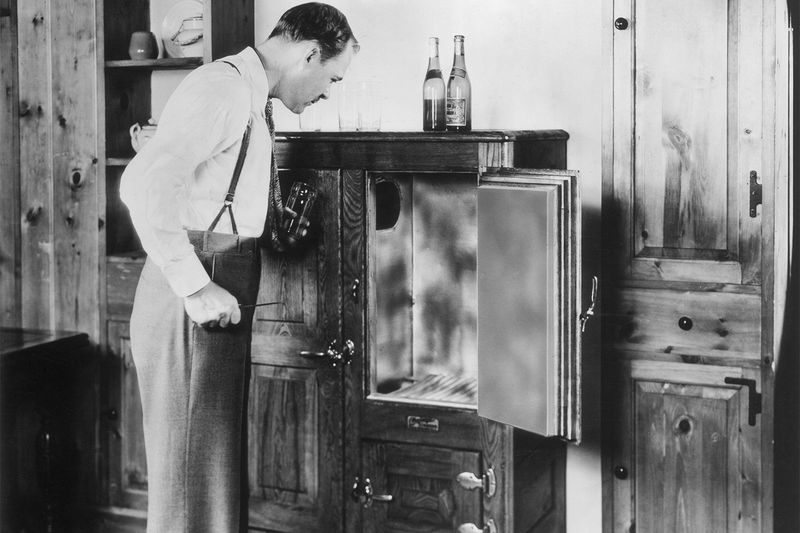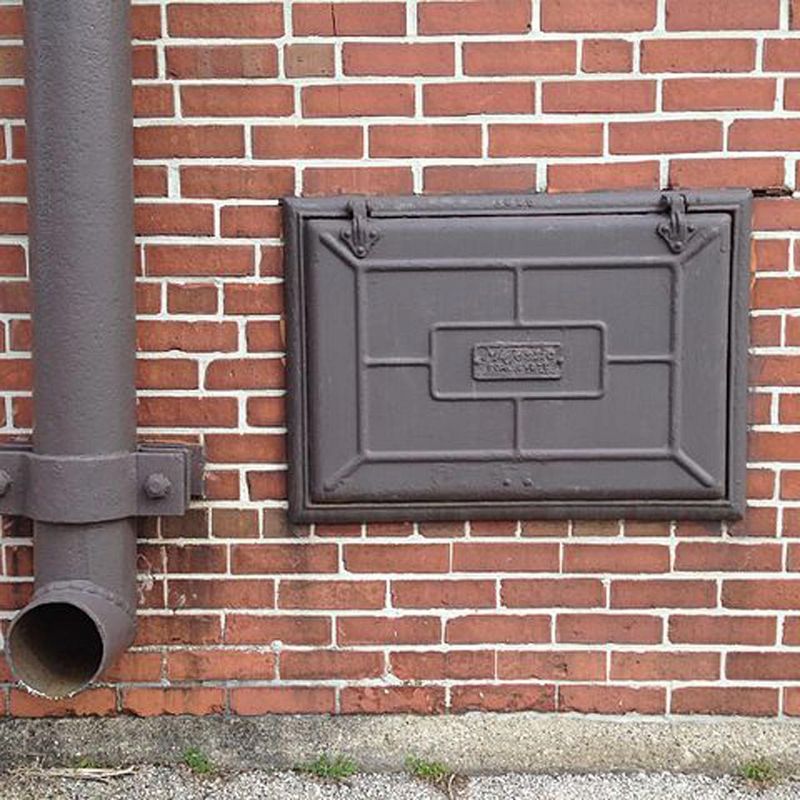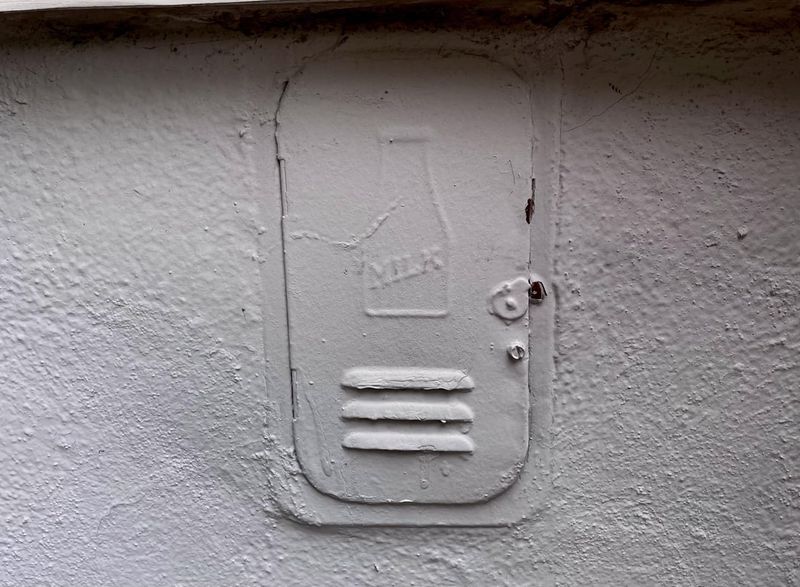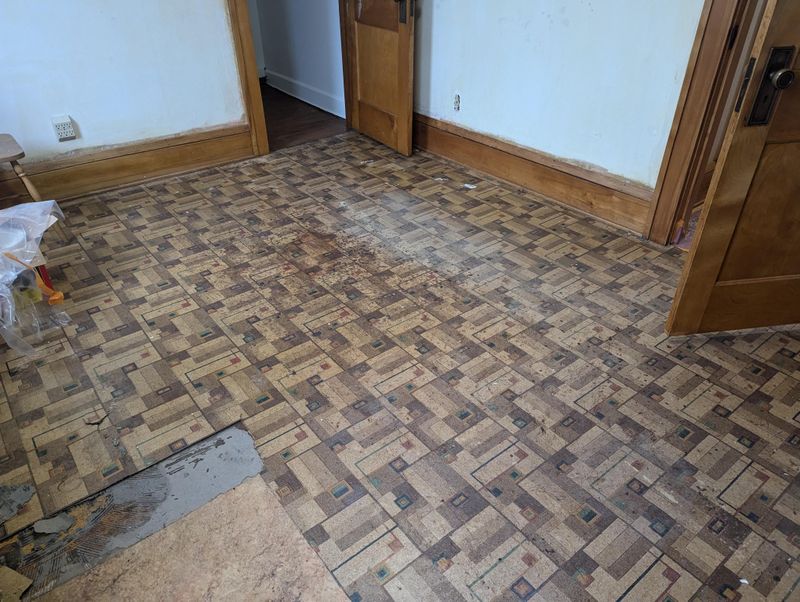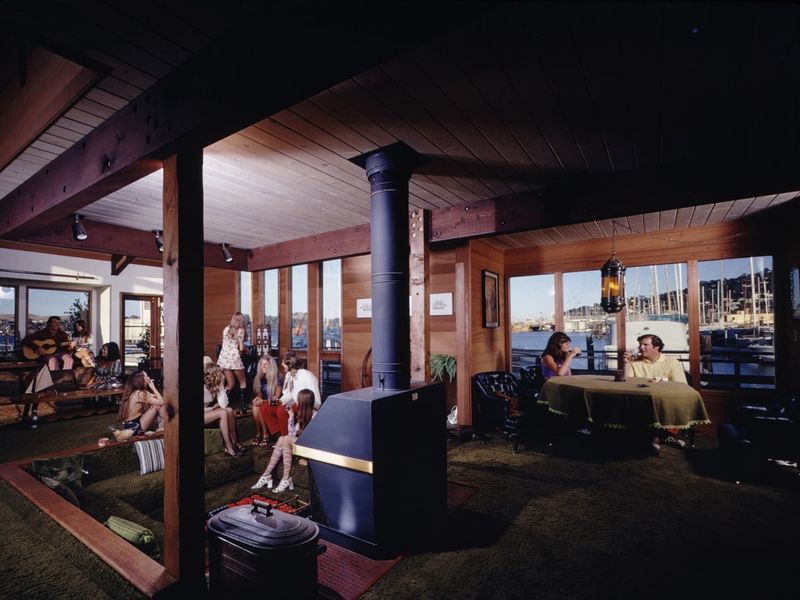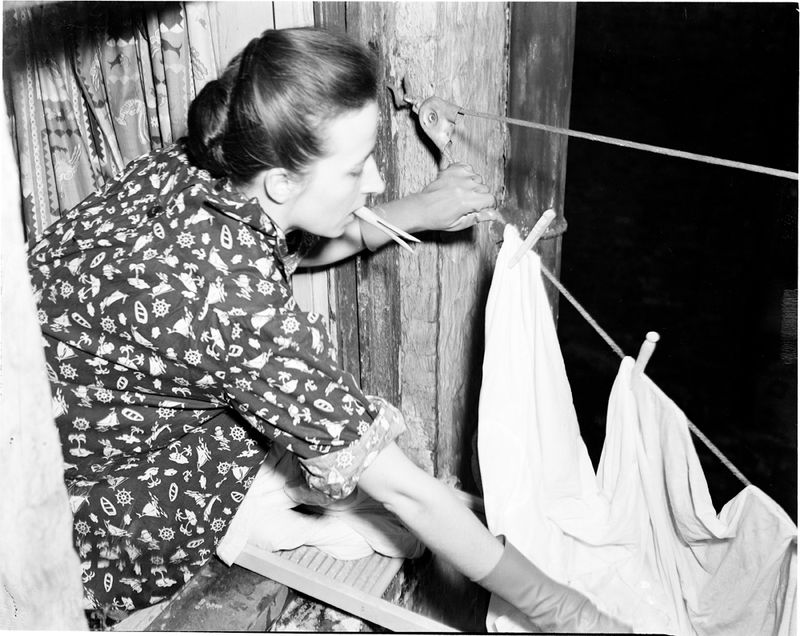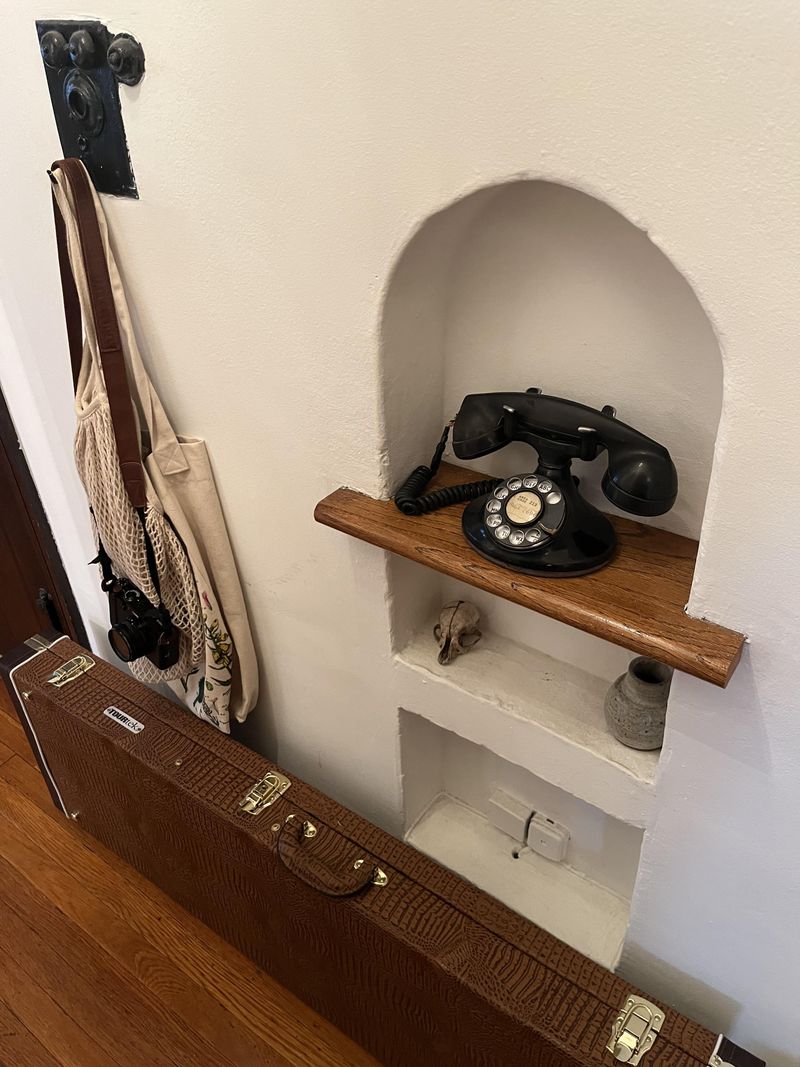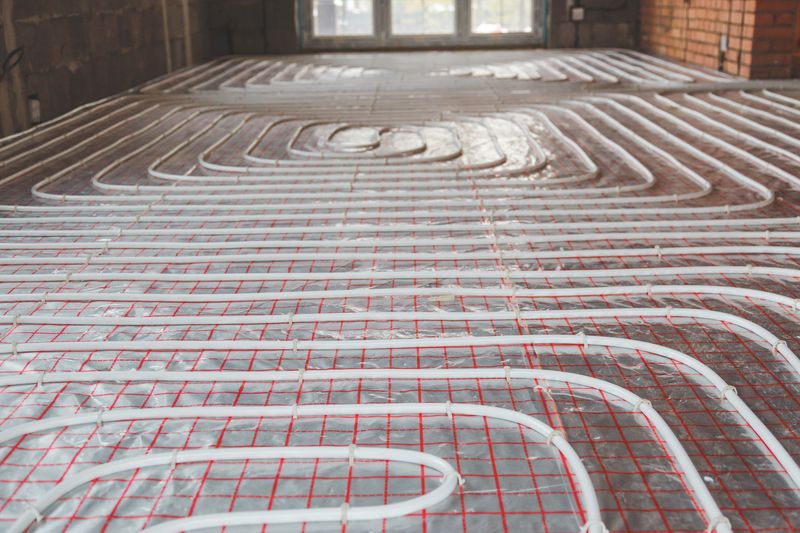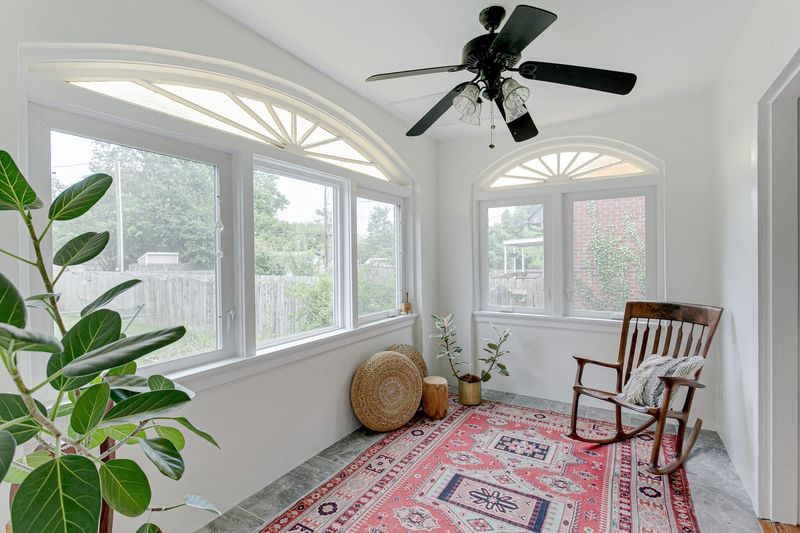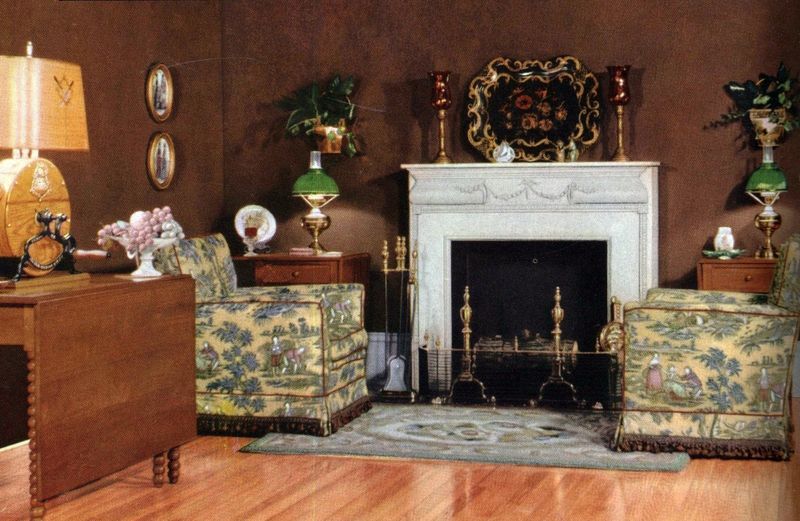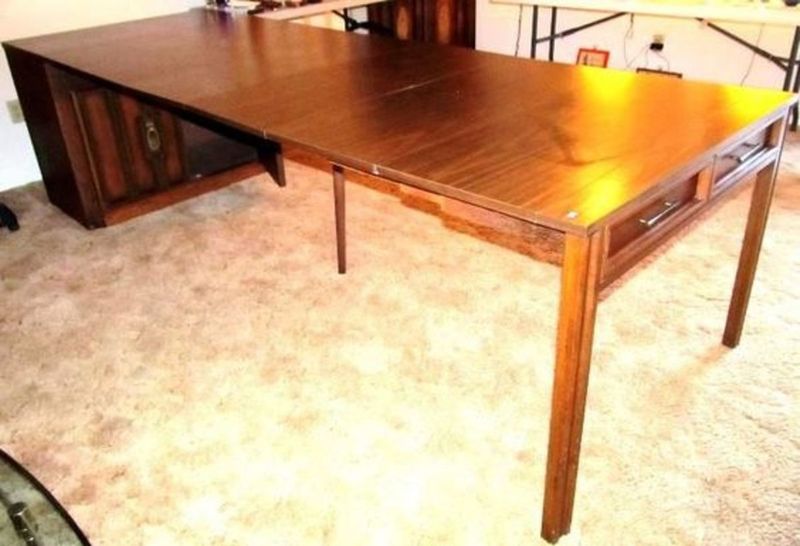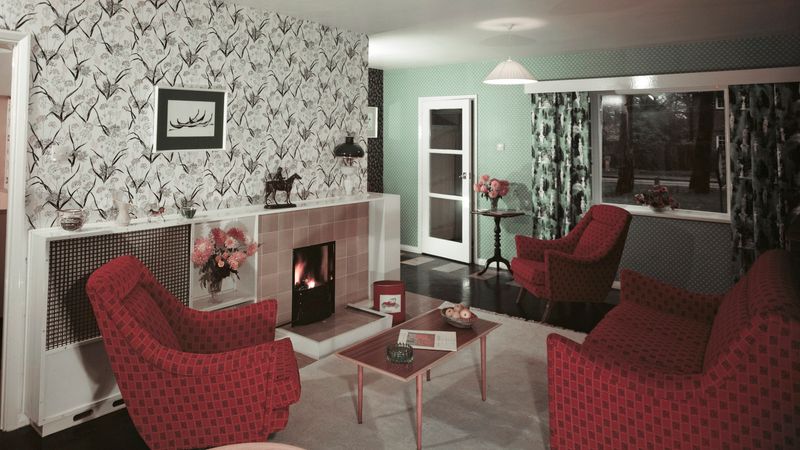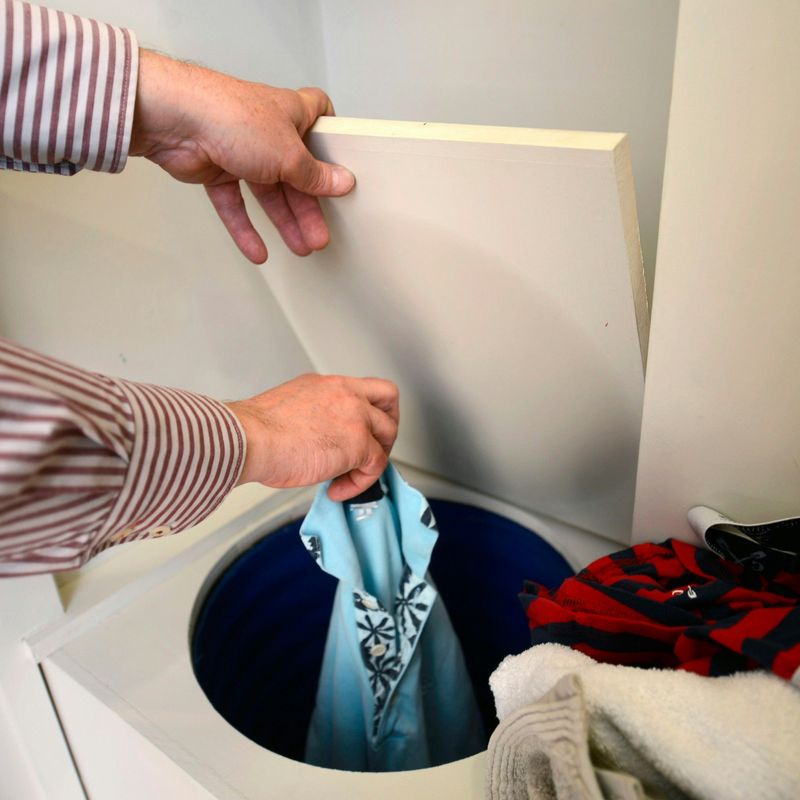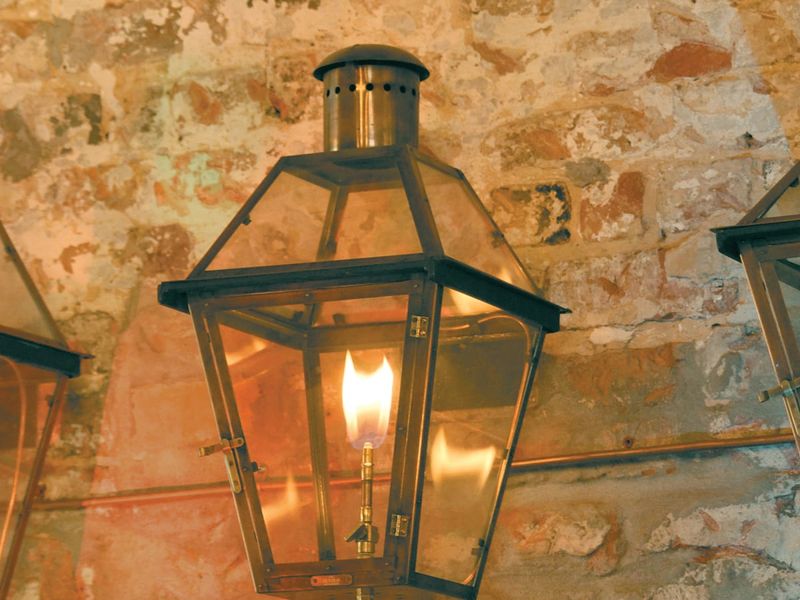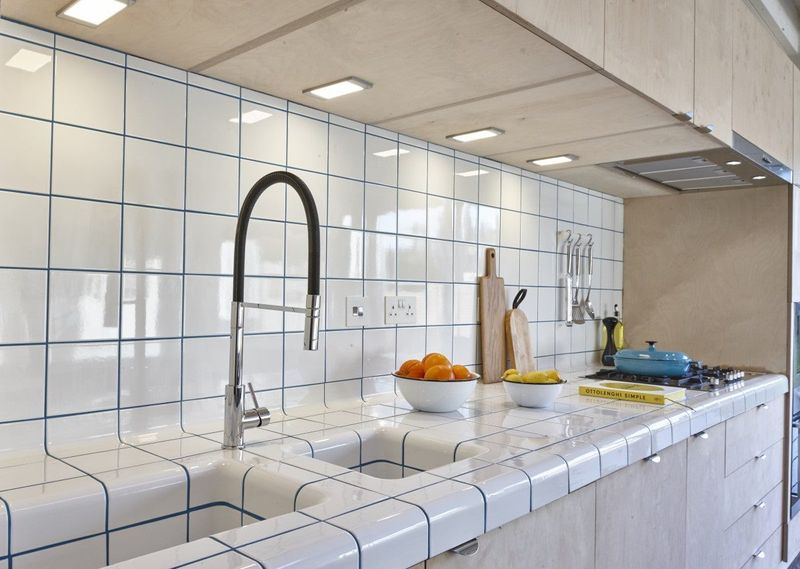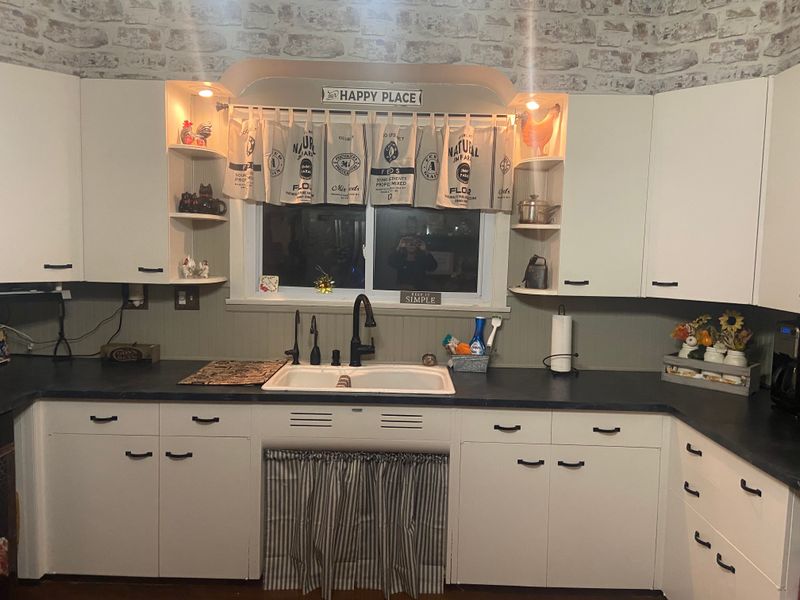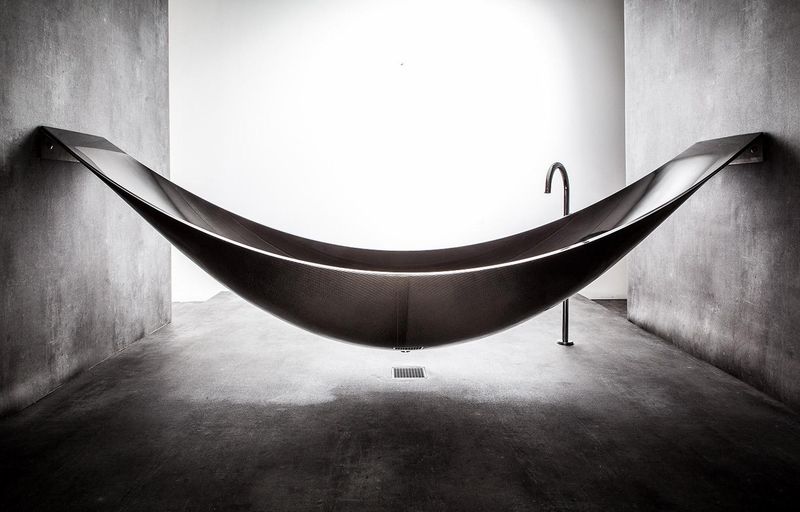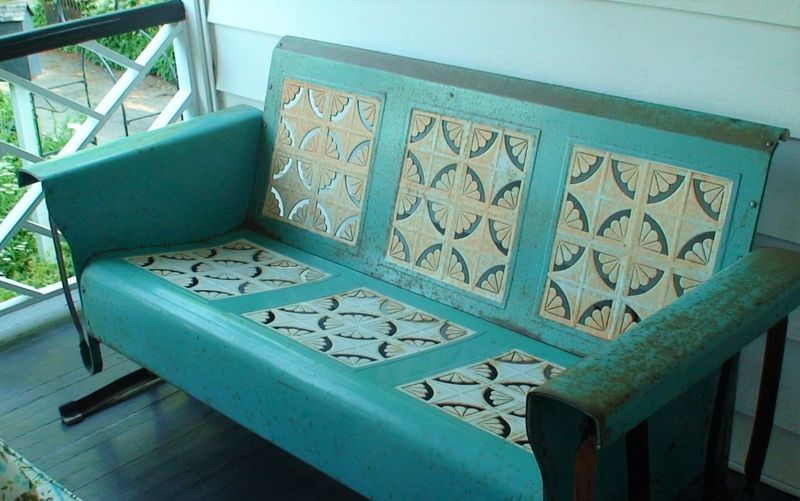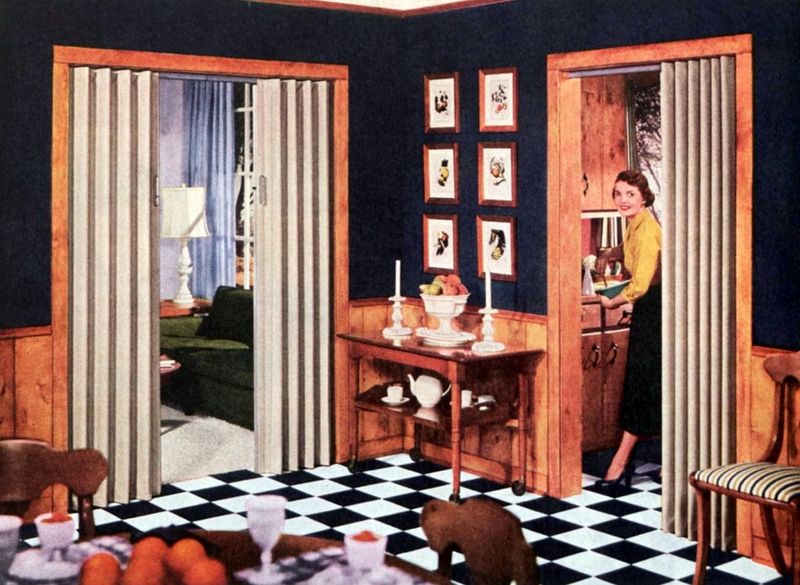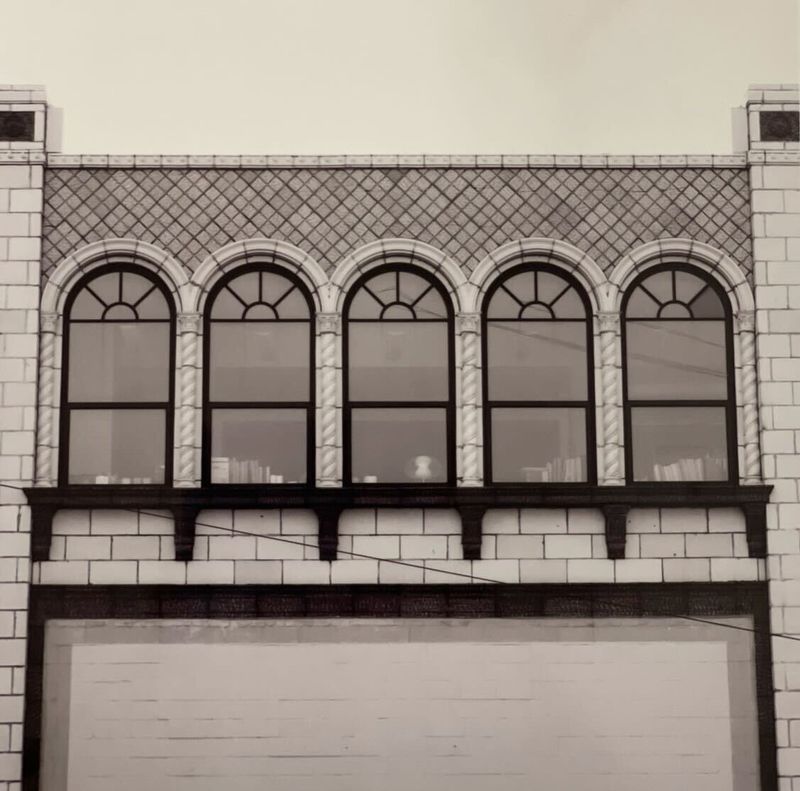20 Forgotten 1940s Home Features That Are Now Relics of the Past
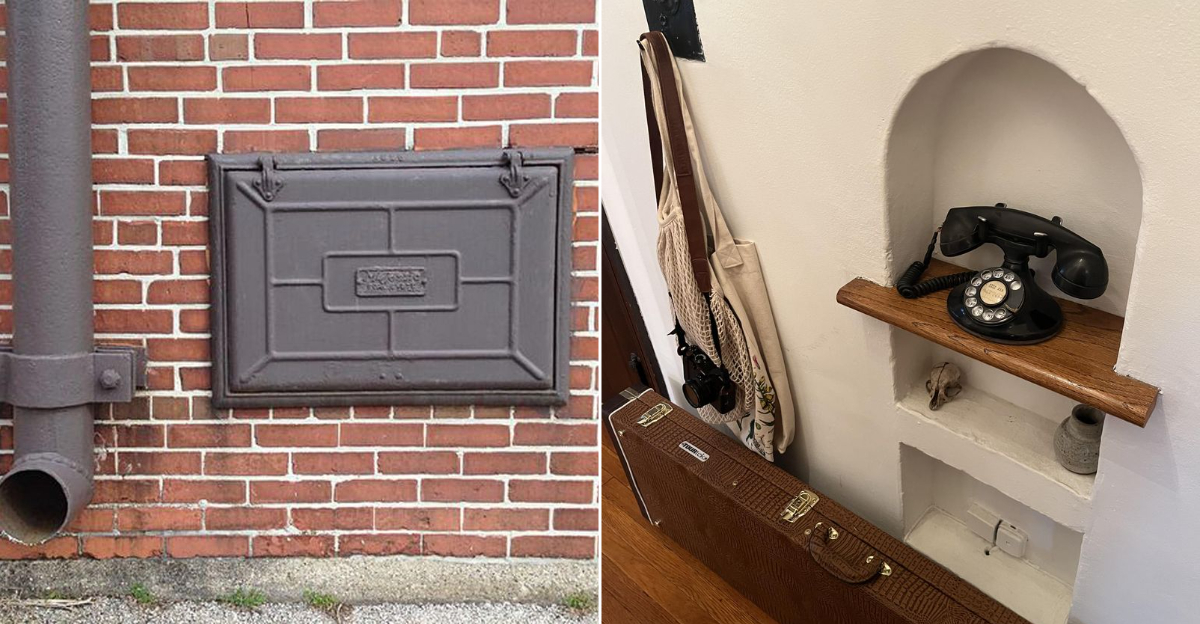
The 1940s were an era of charm, ingenuity, and practicality in home design. Many of the features that defined the homes of that time—once considered essential—have gradually faded away, replaced by modern conveniences and changing tastes.
From icebox refrigerators to built-in telephone nooks, these household staples tell a story of how people lived, worked, and gathered in the past. While some of these features remain fond memories, others have been rediscovered and reimagined in today’s vintage-inspired designs.
1. Icebox Refrigerator
Before electric refrigerators became common, homes relied on icebox refrigerators, simple insulated cabinets designed to keep food cool using large blocks of ice.
An iceman would deliver fresh ice, which was stored in a separate compartment, slowly melting as it kept perishables from spoiling. While practical for the time, daily ice deliveries and constant water drainage made it a high-maintenance necessity.
By the 1950s, electric refrigerators took over, making iceboxes a relic of the past. Today, they are beloved vintage collectibles, a reminder of how far kitchen appliances have come.
2. Coal Chute
Heating homes in the 1940s often meant shoveling coal into a furnace, and the coal chute made that process a little easier.
A small iron or wooden door located on the outside of the house allowed coal deliveries to be poured directly into the basement, where it was stored for winter use. As modern heating systems emerged, coal chutes became obsolete, with many bricked over or converted into unique storage spaces.
Spotting a sealed coal chute on an old home is a telltale sign of a time when home heating required real manual labor.
3. Milk Door
There was a time when fresh milk arrived at your doorstep daily, and a built-in milk door made the exchange effortless.
This small, two-sided compartment, usually found near the kitchen or back entrance, allowed the milkman to leave bottles inside without entering the house. As supermarkets and refrigeration became more widespread, home milk delivery dwindled, leaving these once-practical doors sealed shut or repurposed for storage.
Today, finding a milk door in an old home is a charming reminder of when food delivery was a personal experience rather than a digital transaction.
4. Linoleum Flooring
If you grew up in a 1940s home, chances are your kitchen or bathroom had vibrant linoleum floors.
With bold geometric patterns, bright colors, and easy maintenance, linoleum was an affordable and durable choice for flooring. Over time, it lost favor to vinyl, hardwood, and tile, leading to its decline in popularity.
Ironically, linoleum is now making a comeback as a retro-chic and eco-friendly flooring option, proving that what’s old can be new again.
5. Sunken Living Room
The sunken living room, sometimes called a conversation pit, was a trendy design feature that created a cozy, lowered seating area for social gatherings.
Popular in mid-century homes, this unique layout encouraged intimate conversations and a sense of separation from the rest of the space. As open-concept living took over, the sunken room faded away, with many homeowners leveling their floors for a seamless layout.
Though rare today, homes that preserve this feature capture a distinct charm that brings a touch of vintage sophistication to modern spaces.
6. Clothesline Pulley System
Before electric dryers became mainstream, many households relied on a clothesline pulley system, a practical outdoor solution for drying laundry.
Strung between houses or poles, these pulley-operated lines let homeowners hang laundry from a back porch or kitchen window without stepping outside. While some eco-conscious homeowners still use clotheslines today, they are no longer a standard household feature.
Seeing one still in use today is a nostalgic nod to an era when fresh air and sunshine were the ultimate fabric softeners.
7. Built-In Telephone Nook
Long before smartphones, families gathered around a single rotary phone, often housed in a built-in telephone nook.
These small recessed spaces, usually found in hallways, held the telephone and sometimes had a tiny shelf for directories, notepads, and pencils. As cordless phones and mobile technology emerged, these charming nooks became unnecessary.
Today, they are often repurposed as display shelves or mini charging stations, a fitting transformation for a space once dedicated to communication.
8. Radiant Floor Heating
Some 1940s homes featured radiant floor heating, where hot water pipes or electrical elements ran beneath the floor to provide warmth.
This method distributed heat evenly and was a luxury at the time. However, as forced-air and baseboard heating took over, radiant systems became rare due to high maintenance costs and the complexity of repairs.
In recent years, modern radiant heating has made a resurgence, bringing warm floors back into stylish, energy-efficient homes.
9. Transom Windows
Once a common feature in homes, transom windows were small decorative windows placed above doors, allowing for better airflow and natural light.
Before air conditioning, these windows helped circulate air between rooms, making homes more comfortable in the summer months. As modern HVAC systems took over, transom windows fell out of use, becoming a design feature rather than a functional one.
Today, they are often found in historical homes and modern renovations, adding a touch of vintage charm and elegance.
10. Art Deco Fireplace
The 1940s were influenced by the Art Deco movement, and one of the era’s most stunning home features was the Art Deco fireplace.
These fireplaces had sleek geometric shapes, bold colors, and intricate tile designs, serving as eye-catching focal points in living rooms. Over time, simpler, minimalist styles replaced them, making these fireplaces a rare and cherished feature in surviving homes.
For those who appreciate vintage architecture, an original Art Deco fireplace remains a breathtaking statement piece that brings the past back to life.
11. Pull-Down Kitchen Table
In homes where space was at a premium, a pull-down kitchen table provided the perfect solution.
Mounted on the wall, this foldable surface could be tucked away when not in use, making it ideal for small kitchens and apartments. Over time, larger dining spaces and permanent fixtures made this feature unnecessary, leading to its gradual disappearance.
Today, space-saving furniture has evolved, but the pull-down table remains a clever example of vintage practicality, making occasional appearances in tiny home designs and retro-style kitchens.
12. Wallpaper Borders
A staple of 1940s interior design, wallpaper borders were decorative strips placed at the top of walls or along chair rails to add a sophisticated touch to rooms.
With intricate floral patterns and geometric designs, these borders were once seen as essential home décor. As minimalist trends took over, wallpaper borders faded into history, though they occasionally make a comeback in vintage-inspired renovations.
While modern home design embraces simplicity, these detailed accents remind us of an era when every room had an artistic flair.
13. Laundry Chute
Before modern laundry room setups, many homes had a built-in laundry chute, allowing dirty clothes to be dropped directly into the basement or laundry area.
This simple yet effective feature eliminated the hassle of carrying baskets up and down stairs. As homes evolved and laundry rooms moved to the main floor, chutes became less practical and were often sealed off.
Today, finding a functional laundry chute in an old home feels like uncovering a hidden gem, a testament to the ingenuity of past generations.
14. Gas Lantern Porch Light
Before electric porch lighting became standard, gas lanterns illuminated entryways, offering a warm and elegant glow.
These flickering lights were a charming part of neighborhood streets, casting a soft ambiance at night. As electricity became widespread, gas lanterns became impractical, but they remain a symbol of classic architectural beauty.
Though rare today, gas-powered porch lights are sometimes revived for their nostalgic appeal, adding a touch of historic charm to modern homes.
15. Ceramic Tile Countertops
During the 1940s, ceramic tile countertops were a practical and stylish choice, known for their durability and vibrant colors.
Kitchens were often filled with bold, patterned tiles that added a unique, cheerful character to the space. As seamless countertop materials like laminate and quartz gained popularity, ceramic tile fell out of favor.
Despite its decline, vintage home restorations have brought back these charming surfaces, proving that classic design never truly goes out of style.
16. Metal Cabinetry
Long before wood and composite cabinetry became standard, metal kitchen cabinets were a modern marvel.
Resistant to pests, stains, and wear, these gleaming cabinets were a favorite in many 1940s kitchens. However, as warmer, more natural materials gained popularity, metal cabinetry slowly disappeared from homes.
Today, they are highly sought after in vintage kitchen restorations, bringing a retro-futuristic aesthetic that blends industrial and mid-century charm.
17. Hammock Bathtub
Unlike the traditional clawfoot or built-in tub, the hammock bathtub cradled bathers in a suspended, gently curved design, offering a luxurious, weightless soak.
Though a quirky innovation at the time, this bathtub design was eventually phased out in favor of standardized fixtures.
Today, while rarely seen, the hammock tub remains a fascinating example of creative mid-century bathroom design, proving that comfort and style can sometimes go hand in hand—literally!
18. Porch Glider
Few things captured the leisurely pace of 1940s home life like a porch glider.
With its smooth, soothing motion, this metal-framed, cushioned seat was the perfect spot for summer afternoons, chatting with neighbors, or simply enjoying the breeze.
As outdoor furniture evolved, gliders gave way to rocking chairs and patio sets, but they remain a beloved relic of a time when life moved just a little slower.
Today, restored porch gliders add vintage charm to outdoor spaces, bringing back memories of front porch conversations and lazy Sunday afternoons.
19. Accordion Room Divider
A common sight in 1940s homes, accordion room dividers were a practical way to separate living spaces without permanent walls.
Made of folding panels, they allowed homeowners to create flexible layouts in a time when large, open-concept designs weren’t yet the norm.
As more permanent solutions like drywall took over, accordion dividers fell out of favor. However, their retro charm is making a comeback, particularly in small apartments and vintage-style homes where space-saving solutions are a must.
20. Vitrolite Glass Walls
Popular in 1940s kitchens and bathrooms, Vitrolite was a glossy, non-porous glass material used for walls, countertops, and decorative accents.
Its sleek finish and bright colors made it a favorite among homeowners who wanted a modern, elegant look. However, cheaper alternatives like tile and laminate eventually replaced it, making Vitrolite a rare find today.
Those lucky enough to uncover original Vitrolite walls in vintage homes appreciate their timeless sophistication and durability, a true testament to the craftsmanship of the era.

